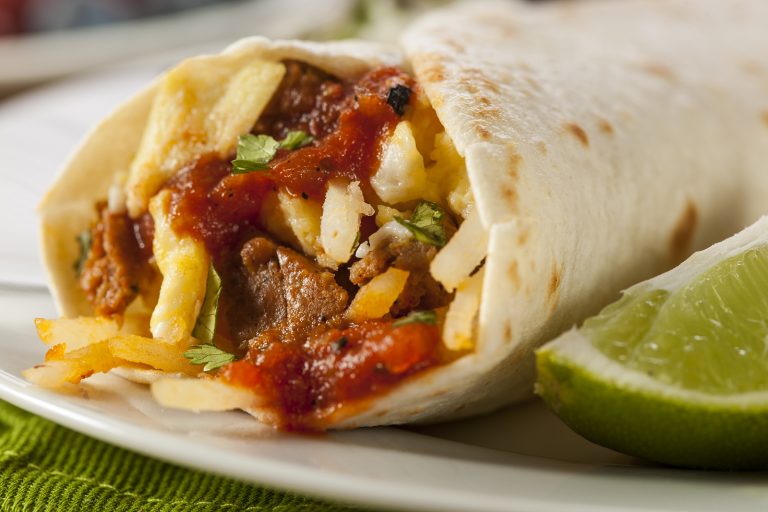There are many legends about the origin of the burrito. My favorite suggests that the wrapped sandwich, traditionally of seasoned meat and beans, came from Mexico with miners who hoped to strike it rich during the California Gold Rush of 1849.

The burrito supposedly takes its name from the rolled packs of miner’s gear that decorated the back of every burro going north to the gold fields. As almost every Arizonian knows, the suffix “ito” means “small” (for example, “mi hijito” is “my little boy”).
Curiously enough, while burritos are the most popular examples of Mexican food in the United States, in Mexico itself they are only popular in the northern part of the country. In Culiacan and Mazatlan (at the entrance to the Gulf of California), south as far as Mexico City, burritos are called tacos. In the south, notably the Yucatan Peninsula, they are called coquitos.
In Arizona, as elsewhere in the U.S., the burrito gradually morphed into a meal in itself. You can find a recipe for the original – beans, beef, and tortillas, among Fill Your Plate’s recipe pages.
A recipe for tostados, contributed by Arizona Farm Bureau Staff, demonstrates the burrito’s evolution, from simple food to exotic flavors. A tostado is a tortilla, fried instead of heated and flat instead of rolled. The difference – except for traditional beef and beans – is fresh, sweet Yuma County lettuce, sun-ripened tomatoes, tangy cheddar from the area’s dairy industry, and locally made salsa. And these make all the difference in the world!
While there is as yet no official state food, the CheckYesForChimi (CYC) campaign continues to build a head of steam in the state senate, as backers attempt to add the chimichanga to Arizona’s list of attributes like the Cactus Wren (state bird) and the Saguaro Cactus bloom (state flower). The chimi, as it is fondly known, is – like other Mexican originals – sometimes this way and sometimes that. For example, a tostado is a chalupa, and a chimi is a deep-fried burrito. Except when they aren’t. But at least we all know what tacos are. Don’t we?
Below the recipe, on every page of Fill Your Plate resources, is a list of farmers and ranchers who offer the needed ingredients, in season, at the peak of quality and at affordable prices. Next time you or your family have a hankering for burritos, bypass the fast food and make your own.
You can even make your own refried beans! Use a pressure cooker and make them fast, or a crock pot and slow cook for even more pervasive flavors. If you want to enjoy the taste of Yuma’s freshest seasonings (cilantro, onion, garlic, and oregano), but none of the fat, substitute heart-healthy olive oil for lard.
Get even more creative and go for what fast-food outlets call the Seven-Layer Burrito. Beans, of course, and beef. Rice is nice, brown rice even better, but you can use cooked quinoa or barley instead. You can even “rice” lightly steamed cauliflower for a real taste treat. Then add some local cheese and some very local lettuce (local to Yuma County, that is, the nation’s winter salad capital)! Sour cream, of course, and diced tomatoes, but perhaps also avocado/tomato relish, or corn and black bean salsa.
You can stop at seven, but why should you? Experiment with fresh-cut corn, celeriac, leeks, even grated kohlrabi, or beets. If your family turns their noses up at such non-traditional ingredients, serve them the next day in a fabulous salad.
All this creative cooking has benefits beyond nutrition. In fact, the act of preparing fresh food, serving it, and sitting down as a family to eat it fulfills one of the ideals of the Slow Food Nation. At each stage, you can start a conversation, ask a question, listen to a story. Life is hectic, but we could all use some quality time getting in touch with the people who matter most.
Related articles
- Leverage Your Leftovers (fillyourplate.org)
- 8 Ways to Eat Healthy, Arizona Style (fillyourplate.org)
- Get Ready to Go Green – It’s National Guacamole Day!! (fillyourplate.org)

